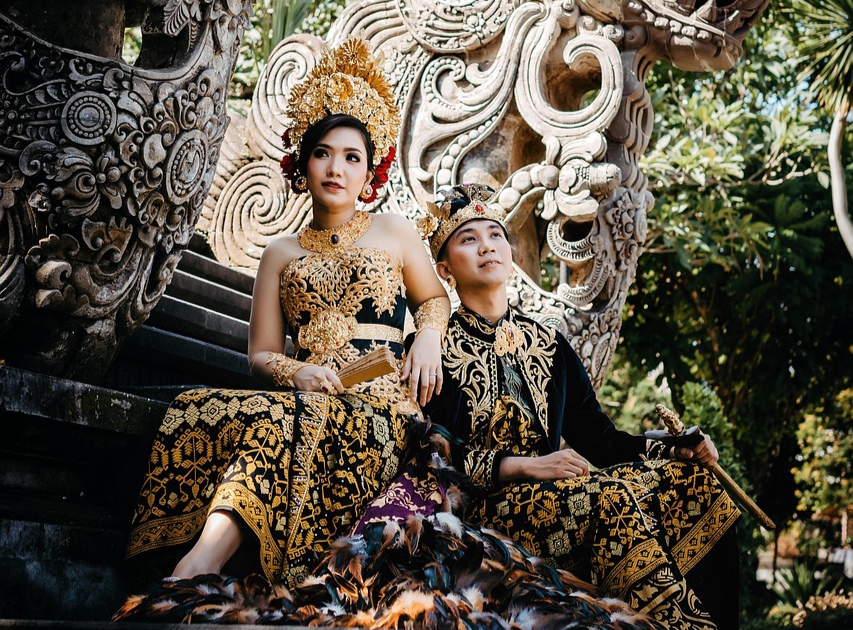Every six months, a unique and sacred ritual takes place at Pura Petilan Pengerebongan in Kesiman, Denpasar, Bali.
Known as Ngerebong, this deeply spiritual tradition attracts thousands of devotees and visitors eager to witness an event that embodies Bali’s mystical heritage.
Ngerebong is held on a specific day in the Balinese calendar, Redite Pon Medangsia, exactly one week after Umanis Kuningan.
The ceremony begins with a solemn prayer session, preparing the participants for what is to come.
By late afternoon, around 4:00 PM, sacred effigies, including Barong and Rangda figures, are carried in a grand procession from the temple’s inner sanctum (utama mandala) to the central courtyard (madya mandala).
As the ritual progresses, a number of devotees enter a state of trance, known locally as kerauhan.
They are supported by temple attendants as they move towards the main pavilion.
The trance-induced participants, both men and women, circle the pavilion three times in a counterclockwise direction, a sacred movement called maider buwana.
The air fills with the sound of intense gamelan music, cries, and chants, heightening the spiritual atmosphere. Some devotees wield traditional kris daggers, symbolizing their deep connection to the spiritual world.
Those in a trance, especially men, often request kris and dramatically attempt to pierce their own chests or necks—yet they remain unharmed, believed to be protected by divine forces.
Ngerebong carries a profound philosophical meaning, symbolizing the purification of the universe, both seen (sekala) and unseen (niskala).
Part of the ritual involves lowering the poleng Kesiman, a sacred black-and-white cloth, to cleanse and harmonize the natural and spiritual realms.
Historically, Ngerebong also commemorates the military triumphs of the Kesiman royal lineage.
It is said that the Kings of Kesiman once led an expansion to Sasak, Lombok, in the 19th century.
Legend tells of a mystical battle involving enchanted crickets, where the Kesiman ruler sought divine intervention from Pura Uluwatu.
He was granted a sacred kris named Ki Cekle, which ensured victory. As a gesture of gratitude, the king initiated the Ngerebong ceremony as a tribute to divine guidance and success.
The ritual was originally performed at Puri Kesiman before being moved to Pura Petilan Pengerebongan.
Historical records from the Dutch colonial period indicate that during this time, Kesiman held political influence over Bali and Lombok. However, the tradition was temporarily halted after the Puputan Badung battle.
It was revived in 1937 when the temple was fully reconstructed, and since then, it has continued uninterrupted.
Ngerebong is now recognized as an intangible cultural heritage of Indonesia, officially designated in 2018.
As this ancient ritual continues, it stands as a testament to Bali’s spiritual and cultural richness, ensuring that its profound legacy endures for future generations. (BT)





